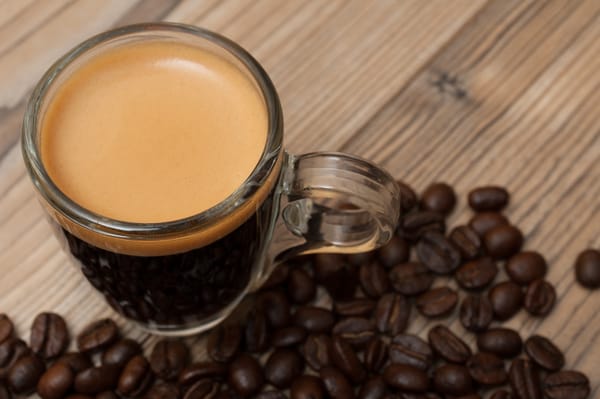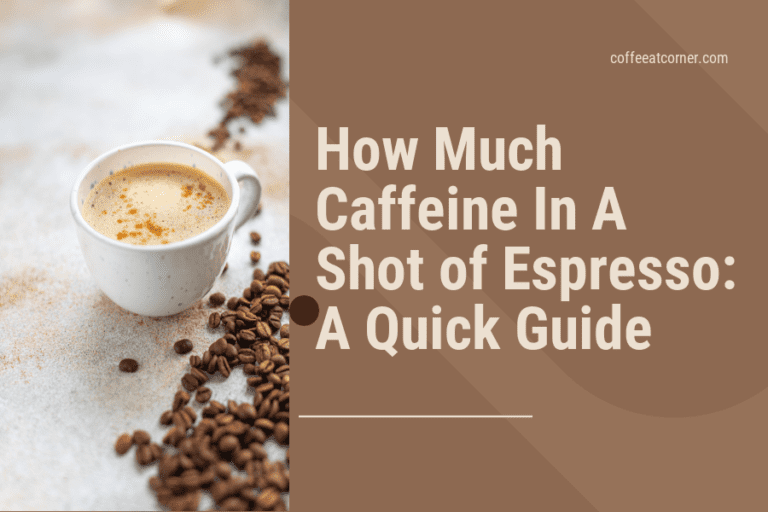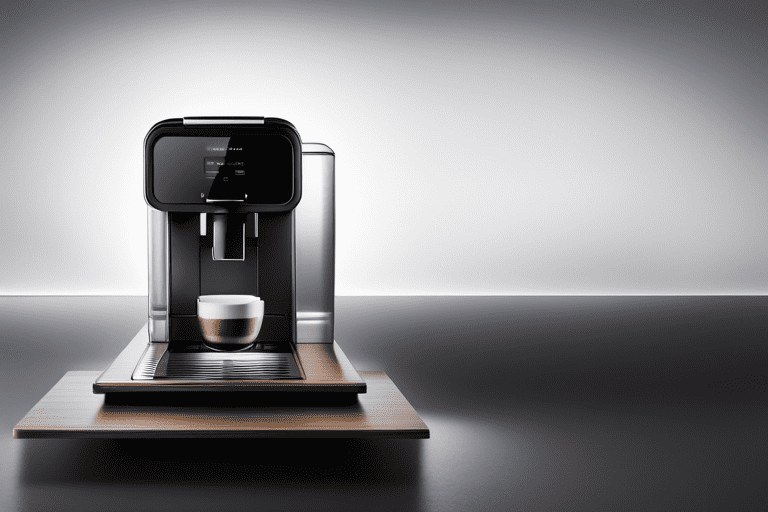How Much Espresso is in a Shot? A Comprehensive Guide

Have you ever wondered how much espresso is in a shot? As coffee enthusiasts, we know that espresso is a concentrated form of coffee that is brewed by forcing hot water through finely ground coffee beans. A shot of espresso is a small serving of this concentrated coffee that is typically served in a demitasse cup. But how much espresso is actually in a shot?
According to our research, a single shot of espresso typically requires seven to nine grams of ground coffee and produces one fluid ounce of liquid espresso. A double shot of espresso, also known as a doppio, requires 14 to 18 grams of coffee and produces two fluid ounces of espresso. However, the amount of coffee used can vary based on personal preference and the type of espresso machine being used.
Understanding the amount of espresso in a shot is important for making the perfect cup of espresso. The ratio of coffee to water, also known as the brew ratio, can affect the taste and strength of the espresso. By using the correct amount of coffee and water, you can achieve a well-balanced shot of espresso with a rich crema and smooth flavor. In this article, we will explore the ideal dose and ratio for a shot of espresso and provide tips for making the perfect cup at home.
What is a Shot of Espresso?
Definition of Espresso
Espresso is a concentrated coffee beverage that is brewed by forcing hot water under high pressure through finely ground coffee beans. The result is a small amount of strong, flavorful coffee with a layer of crema on top. A shot of espresso typically contains about 1 fluid ounce of coffee, while a double shot contains about 2 fluid ounces.
History of Espresso
Espresso originated in Italy in the early 20th century, and quickly became popular throughout Europe and the rest of the world. The first espresso machines were large and expensive, and were only found in coffee shops and restaurants. However, as the machines became smaller and more affordable, it became possible for people to make espresso at home.
Types of Espresso Shots
There are several different types of espresso shots, each with its own unique characteristics:
- Ristretto: A ristretto shot is made with the same amount of coffee as a regular shot, but with half the amount of water. The result is a very strong and concentrated shot of espresso.
- Single Shot: A single shot of espresso is made with about 7 grams of coffee and 1 fluid ounce of water.
- Double Shot: A double shot of espresso is made with about 14 grams of coffee and 2 fluid ounces of water.
- Lungo: A lungo shot is made with the same amount of coffee as a regular shot, but with twice the amount of water. The result is a milder and less concentrated shot of espresso.
It’s important to note that the amount of coffee and water used to make an espresso shot can vary depending on the machine and the preferences of the person making the coffee. However, a standard shot of espresso is typically around 1 fluid ounce, while a double shot is around 2 fluid ounces.

How Much Espresso is in a Shot?
When it comes to making espresso, one of the most common questions is how much espresso is in a shot? The answer to this question can vary depending on a few factors, such as the standard espresso shot size, the ratio of coffee to water, and the dose of coffee used. In this section, we will explore these factors and discuss how to measure espresso shot size accurately.
Standard Espresso Shot Size
The standard espresso shot size is typically around 1 to 2 ounces or 30 to 60 milliliters. However, the exact size of a shot can vary depending on the country, region, or even the coffee shop. For example, in Italy, a single shot of espresso is usually around 30 milliliters or 1 ounce, while in the United States, a single shot can be anywhere from 1 to 2 ounces.
Factors that Affect Espresso Shot Size
Several factors can affect the size of an espresso shot, including the dose of coffee, the grind size, the tamping pressure, and the brewing time. The most important factor is the dose of coffee, which refers to the amount of ground coffee used to make a shot. The standard dose for a single shot of espresso is around 7 grams, while a double shot is around 14 grams. However, some baristas prefer to use a higher or lower dose depending on the coffee beans, the machine, and their personal preference.
The grind size can also affect the shot size, as a finer grind can result in a slower extraction and a larger shot, while a coarser grind can result in a faster extraction and a smaller shot. The tamping pressure can also affect the shot size, as a higher pressure can compress the coffee more and result in a smaller shot, while a lower pressure can result in a larger shot. Finally, the brewing time can affect the shot size, as a longer brewing time can result in a larger shot, while a shorter brewing time can result in a smaller shot.
Measuring Espresso Shot Size
To measure the size of an espresso shot accurately, you will need a scale and a measuring cup or shot glass. First, place the cup or glass on the scale and tare it to zero. Then, grind the coffee and dose it into the portafilter. Use a digital scale to measure the dose accurately. Next, tamp the coffee and lock the portafilter into the machine. Start the brewing process and time the shot. Once the shot is finished, measure the volume of the shot using the cup or glass. Ideally, a single shot should be around 1 ounce or 30 milliliters, while a double shot should be around 2 ounces or 60 milliliters.
In conclusion, the amount of espresso in a shot can vary depending on several factors, such as the standard espresso shot size, the ratio of coffee to water, and the dose of coffee used. To measure the size of an espresso shot accurately, you will need a scale and a measuring cup or shot glass. By understanding these factors and measuring your shots carefully, you can achieve consistent and delicious espresso every time.
Making the Perfect Espresso Shot
At the heart of any good espresso is a perfectly pulled shot. There are many factors that go into making a great shot, from the espresso machine to the coffee beans themselves. Here, we’ll go over the key elements to make sure your espresso shots are consistently delicious.
Espresso Machine
The espresso machine is the foundation of any good shot. It’s important to have a high-quality machine that is properly maintained. A good machine will have a consistent temperature and pressure, which are essential for a good shot.
Coffee Beans
The quality of the coffee beans you use will have a big impact on the flavor of your espresso. It’s important to use fresh, high-quality beans that are roasted to perfection. Arabica beans are the most common choice for espresso, but some blends may include Robusta beans as well.
Grind Size
The grind size of your coffee is crucial for a perfect shot. Too fine of a grind can result in a bitter shot, while too coarse of a grind can result in a weak shot. It’s important to experiment with different grind sizes to find the perfect balance for your taste.
Dose
The amount of coffee you use for each shot, known as the dose, is also key. The ideal dose will depend on your machine and personal preference. Generally, a dose of 18-20 grams is a good starting point.
Tamping
After you’ve dosed your coffee, it’s important to tamp it down evenly. This helps to ensure a consistent extraction. A good rule of thumb is to apply 30 pounds of pressure when tamping.
Brewing Time
The brewing time for a perfect shot is typically around 25-30 seconds. This allows for a good extraction without over-extracting the coffee. Timing your shot is key to getting it just right.
Crema
A good shot of espresso should have a layer of crema on top. This is the reddish-brown foam that forms on top of the shot. The crema adds flavor and texture to the shot.
Consistency
Consistency is key when it comes to making a perfect shot of espresso. It’s important to use the same amount of coffee, tamp with the same pressure, and time your shots consistently. With practice and attention to detail, you can achieve a consistent shot every time.
Espresso vs. Other Coffee Drinks
Espresso vs. Drip Coffee
When it comes to caffeine content, a single shot of espresso has about 64 milligrams of caffeine, while an 8-ounce cup of drip coffee has about 92 milligrams. However, most espresso drinks use two or more shots, so while a single cup of espresso won’t pack the same caffeinated punch as a cup of coffee, most café-style drinks will pack more.
Another difference between espresso and drip coffee is the brewing method. Drip coffee is made by pouring hot water over coffee grounds, while espresso is made by forcing hot water through finely ground coffee beans. This results in a more concentrated, full-bodied flavor for espresso, while drip coffee is typically smoother and less intense.
Espresso vs. French Press
Like drip coffee, French press coffee is brewed by pouring hot water over coffee grounds. However, unlike drip coffee, the grounds are steeped in the water for several minutes before being filtered out. This results in a stronger, more full-bodied flavor similar to espresso.
Despite the similarities in flavor, there are still some key differences between espresso and French press coffee. The main difference is the concentration of the coffee. A single shot of espresso is only about one ounce, while a typical serving of French press coffee is around 8 ounces. This means that espresso is much more concentrated and has a higher caffeine content per ounce.
Other Coffee Drinks
Espresso is the base for many popular coffee drinks, such as cappuccinos, lattes, and Americanos. These drinks typically contain one or more shots of espresso, combined with steamed milk, foam, or hot water.
Another popular coffee drink is brewed coffee, which is made by pouring hot water over coffee grounds in a filter. This results in a smooth, mellow flavor that is less intense than espresso. However, brewed coffee typically has a higher caffeine content per serving than espresso.
Coffee extract is another option for those who want a concentrated coffee flavor. It is made by brewing coffee with hot water and then removing the water through a process of evaporation or freeze-drying. This results in a highly concentrated coffee flavor that can be added to drinks or used in baking.





